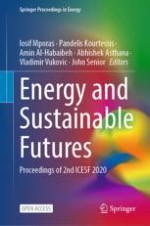19.1 Introduction
19.2 Experimental
19.2.1 K-ω Turbulent Model
19.2.2 The Reynolds Stress Turbulent Model
19.2.3 Detached Eddy Simulation: DES (IDDES SST k-ω Turbulence Model)
19.2.4 Large Eddy Simulation (LES WALE)
19.2.5 Geometry and Mesh Generation
19.3 Results and Discussion
SST k-ω | IDDES SST k-ω | RST | LES WALE | |
|---|---|---|---|---|
F (N) | −3.45 | −2.56 | −2.76 | −2.8234 |
D (N) | 2.27 | 2.29 | 2.145 | 2.045 |
Mass flow inlet plane 1 (kg/s) | 0.236 | 0.242 | 0.231 | 0.235 |
Mass flow outlet plane 5 (kg/s) | 0.096 | 0.13 | 0.10 | 0.12 |
19.4 Conclusion
-
The study has revealed the RST, the IDDES and the WALE LES are the only models which described external pressure gradient regions well and therefore the shroud turbulent wake.
-
Internally, all models predicted a pressure difference between the planes 1 and 5 which shows a movement of the air from the lower plane 1 (inlet) to the higher plane 5 (outlet). This motion could be used to drive a turbine.
-
The RST and IDDES predicted better vorticities on the plane 1 (inlet). Although RST, IDDES, and WALE LES captured areas of turbulences across the internal region, only the WALE shows the plane 1 (inlet) turbulences. Subsequently, the study showed that the internal region of the shroud is partially highly turbulent.
-
Finally, all models showed that there is a downward lift which is produced due to the wing being inverted with an overestimation on the SST k-ω model. The drag is relatively the same across the models.
